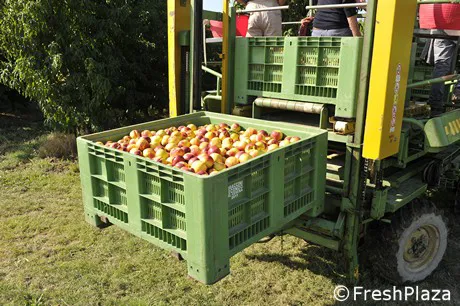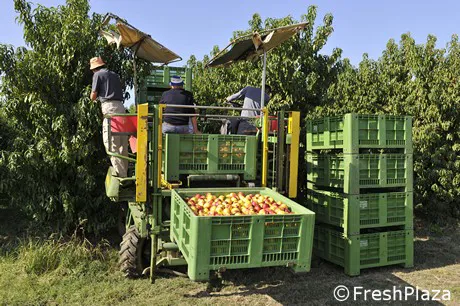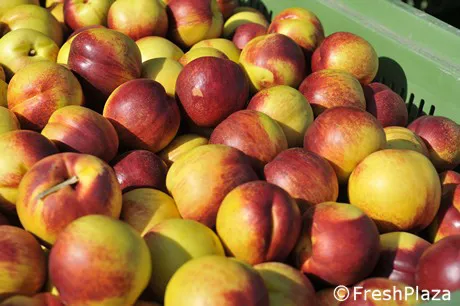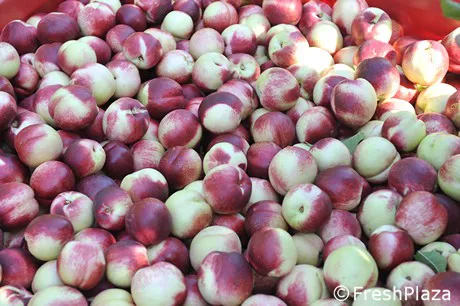Watch the video
Fruits must be harvested at the right moment when the flavour and texture are good but with a few days to spare for commercialisation. It's not easy and the right varieties are needed. On 5th September 2017, we visited an orchard in Faenza (Ravenna), one of the areas specialising in peach cultivation.

At the Roberto Zardi company, we witnessed the harvesting of the Romagna Late variety. The producer owns 4 hectares of this variety and hands the fruit over to "Piraccini Secondo". The combination of grade, ripening and texture is perfect. We tasted a nectarine and can say that it was nice, compact and with a slightly acidic flavour.

Some might like them this way, but others might prefer them sweeter. This is the compromise, however. The variety makes it possible to wait a few days longer before harvesting, thanks to its compact flesh, but it then depends on each single business, workers, risk of rain/hail and the demands of traders. "Prices are good now, so it's the right time to harvest."

Romagna Late, harvested at a ripening stage that pleases producers, traders and consumers
We also visited a company that was harvesting the Romagna Mia variety, a white nectarine with large grades. In this case, however, the producer harvested the fruit too early, as can be seen by the colour and grade and by the fact that the flavour was too acidic. In addition, this producer did not thin very much nor irrigate well.

Harvesting was approximately 7 days too early. The colour is too pale and grade is well below its potential
Producing peaches and nectarines in September could be profitable as stocks are low, but cold storage units don't do miracles - if a fruit is too unripe, it will never become good enough to make consumers want to buy it again.
